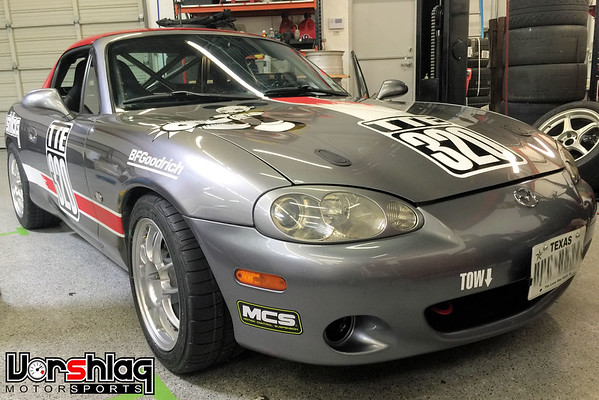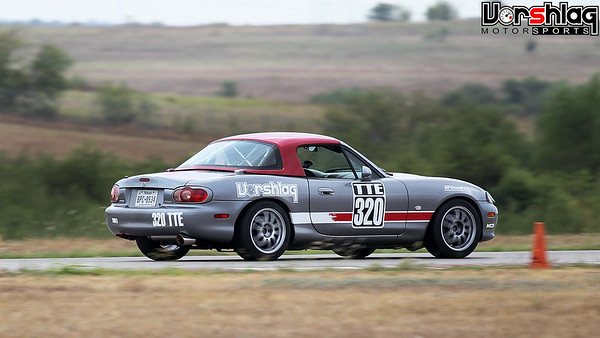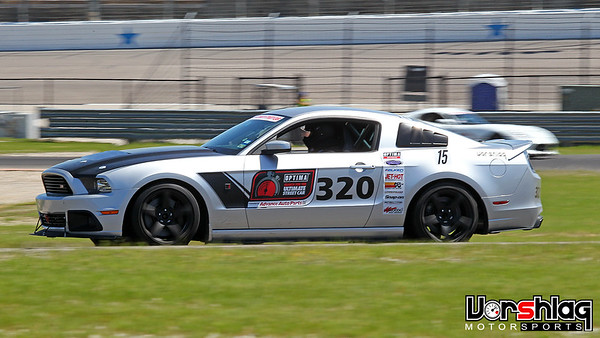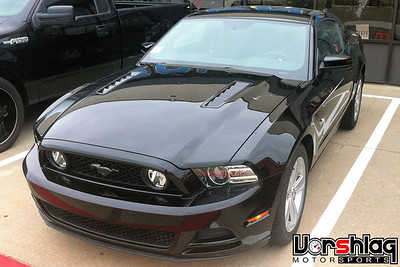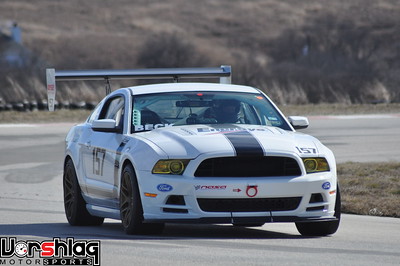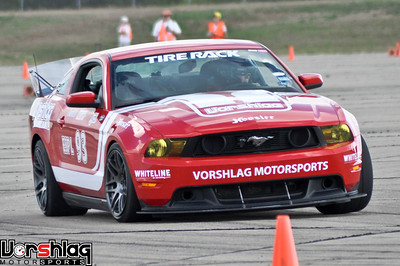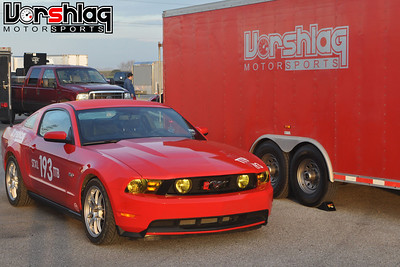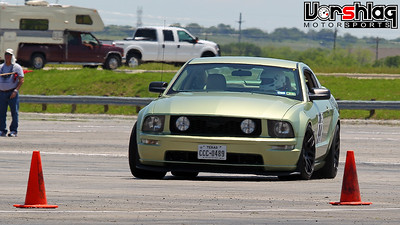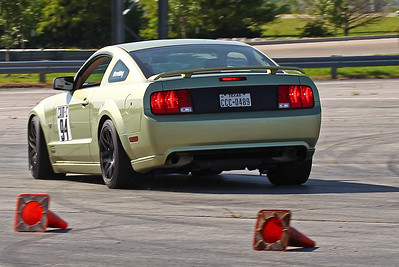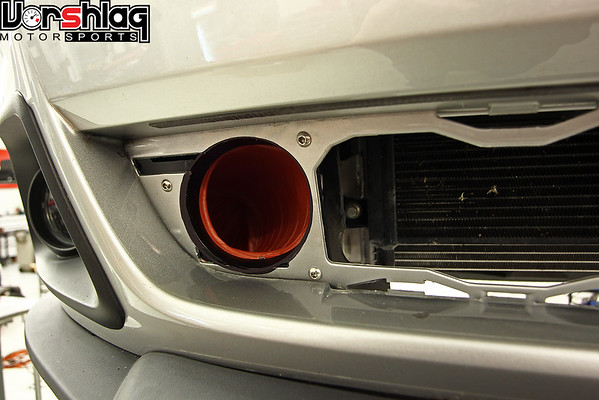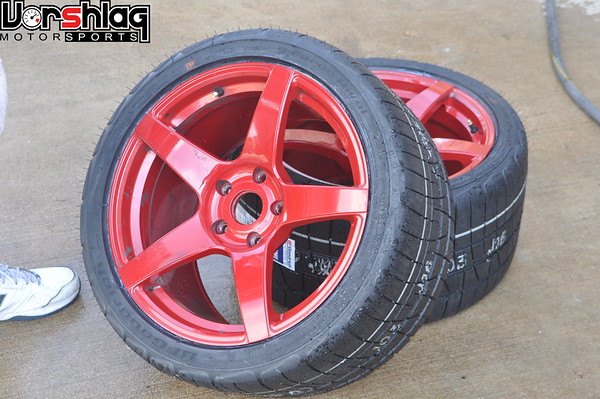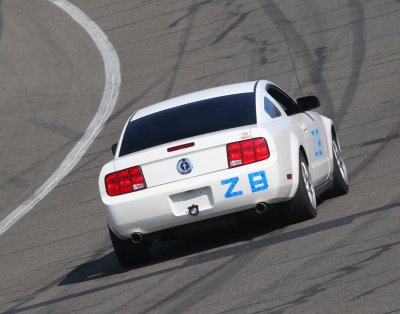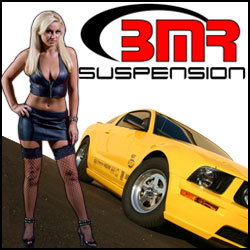I'm not trying to prove anything or be rude...
Our V6 Was purchased for $5,000.00 as a training tool to keep speeds down and for specific NASA TT classing – C or B. If totaled, low initial investment for a learning tool. A very easy platform to upgrade also parts are cheap and in most junk yards, fenders, doors, ECT.
The tires were purchased for dual purpose – Street, Track, Training. In a heavy car with narrower tires, lower over speed is kept with reason for training - The driver could reach the limits at a much lower speed, have fun and not reach the pucker factor. Repetition - Training their personal non-thinking and thinking motor skills in a safer / slower environment. Meaning self-automatic correction with out having to think about it for car control. With some seat time you automatically make small corrections when the car is skiterish not even thinking about it – It just happens – Much, much easier to learn when at lower speeds with an easy to read tire. I would think you might be familiar with this.
Ahh, OK, so now many of your choices make more sense. You never stated that the car was built around a skinny wheel/tire on purpose until here, unless I missed it earlier. You act like I should know that about your car - sorry, I didn't.

I get it now - this car is running skinny, street compound tires because this is a
trainer car. But you have aggressive brake pads and ducting? I guess that's for reliability, too.
We just built a
similar trainer track car for a customer using a 2003 Miata, which we tested for the first time on track last weekend (MSR-C 3.1). We also purposely kept it on somewhat narrow street tires (225mm Rival-S on 15x8 wheels) to keep the grip levels down, but we added aggressive brake compounds to allow him to explore harder braking, then added brake ducting to keep the brakes
consistent. It still has pretty amazing cornering speeds, but not what it would have on Hoosiers.
But we also built it around a NASA TT class (TTE), because it will likely end up there. And won't need any changes to be point-maxed for this class. So while it was a "trainer car" it was also built as a dedicated race car, with all of the safety upgrades normally seen in a W2W car, since it could easily become one (TTE/PTE) in the future. And you can never be too safe...
My point was that most people I know who are building S197 track cars DO care about lap times, and thus won't be running 265mm street tires unless they are severely budget constrained. So if they run a 10" or 11" wide front wheel, which they should, the hard ducted brake hoses you propose
won't likely work well for them. Your trainer car is somewhat unique in that it has skinny wheels/tires, yet dedicated brake ducting. I think you are trying to argue that they will work for most S197s because you think the inboard wheel clearance is about the same on all wheels... but I think that's not the case.
Now the main subject – It doesn’t matter if you have a 225, 265 or 335 tire if the outside diameter and overall inside offset is the same. (Measurements from the inside bolting surface to the edge of the rim / tire sticking in the fender well) What this means is that only so much of the tire can be set to the inside - All the extra rubber and rim is set outward. Since only so much tire can stick in, it doesn’t matter if you have a 225, 265 or 335 tire. Both sit as far in as possible.
Well.... I will respectfully disagree here, because it almost always
does matter. Most folks won't stuff the wheel as far
inboard if they are running a 235mm tire (factory fitment for a lot of S197s) vs a 315 (which we can fit with the right wheel).
The outboard edge of the tires on the 18x8/235mm tire (left) and 18x11/295 tire (right) aren't all that different
The inboard wheel offset is going to very likely be very different on a 235 vs 315 tire on an S197. As are most offsets for other wheel and tire sizes in between.
All extra tire width is set outwardly. With the strut OD that I currently have, no more inside offset is possible. Maybe your struts are thinner. If they are, it can’t be by much. Maybe I’m wrong.
Look, I get what you are trying to prove here, but it rarely works that way in practice unless you are trying to keep the track width
super narrow on skinny tires. The
opposite is usually the goal - where most wheel/tire widths/offsets used on a track car are usually pushing the
outside of the tire out as
wide as the fenders comfortably allow, to
maximize track width. Because more track width adds more mechanical grip. Old racer trick. Also, with the wheels pushed to the edges of the fenders, it makes all wheel widths "look" better". This is just one of those known "style tricks" wheel makers will tend to maximize.
So I'm saying the opposite is usually the case from what you propose ("inboard wheel spacing is almost always the same"), in the real world. We've probably put more than 1000 wheels on S197 Mustangs, and that's just how they tend to be made.
We ran the same car on 18x11F/18x12R (left) and 18x9 F&R (right) at different times, but the outboard track width is similar
Therefore I highly doubt that you have a 265mm tire as close inboard to the strut as we run with the 18x10 or an 18x11" wheels. Strut diameters/widths are very similar among all strut styles and brands, by the way. We ran our S197 on 18x9's and 265mm tires (above right) for a long time (2010-2012, restricted to those limits for SCCA STX class) on several sets of 18x9" wheels - but each set still pushed the track width out as much as possible, which made for massive inboard tire-to-strut clearance on this skinny wheel setup. With the 18x10" if got much closer, and the 18x11" (above left) it was down to about 3mm clearance from inside of the wheel to the strut. Very very close. There's also slop in the strut bracket-to-spindle bolt holes, which we have to maximize for the 18x11" front wheel fitment (pulling the spindle outboard to maximize inboard wheel room).
Maybe your S197 platform is different - Mine works. If you blow the pic up in my original post you can see the size of the dimple and it is oversized. Even if the dimple were bigger, the tube would out flow a ribbed, flexible tube.
Again, I don't doubt that with a 265mm tire (which we have used extensively for 3 years of racing on our 2011 GT) you might get away with a hard brake duct up front. I'm just saying that MOST people will tend to use a WIDER wheel than your trainer car, and when you do so you almost always need to push the wheel even closer inboard to fit the 10" and more so on the 11" widths we tend to use on most customer's S197s.
And the "early" and "late" S197s are virtually identical. They share the same strut towers, lower control arm lengths, strut diameters, and fender clearances. Jon @ Vorshlag's (see above) "early" S197 has our 18x11" wheels on 295mm tires, and he's about to switch to 315s. They fit under stock fenders of his 2007 GT almost exactly the same way they fit on the 2010-14 cars.
No more need to argue your point - you win.

On
your trainer car with unusually narrow wheels and tires you likely
can get away with hard brake ducts (dimpled). But... for most folks this is a dead end.
I'm trying to save people the hassle of finding this out the hard way, which is why I keep responding to your posts in ever greater detail. Most track oriented S197 owners AREN'T running that narrow of a wheel IF they have gone to the effort of adding brake ducting. If we felt we could get away with running hard brake ducting, we would have done this years ago and would sell a kit - believe me, I'd much rather see hard ducts whenever possible, because they outflow corrugated brake hose. But they just don't fit the vast majority of S197 track cars.
Generally folks are getting the BIGGEST mods out of the way first, and on these heavy cars the widest tire and wheel package you can run is one of the FIRST things tackled. Well, they should do springs/shocks/camber plates before they ruin their big fat tires, to limit body roll and shoulder edge wear on their tires. But tires make the MOST difference to lap times than anything else... its the biggest improvement people will ever see.
Cheers,


